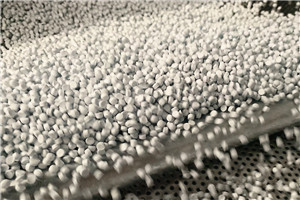Golden Far East Machinery Co.,Ltd.
Manufacturing Plastic Machinery Factory
Per year, about 300kg of garbage is discarded by only a single resident of a big city, and only 1/3 of that garbage is occupied by PET bottles (plastic containers). Today, those bottles are used to fill mineral and other waters, beer, juices and so on. At first sight, used PET bottles seem to be completely useless, unlike waste paper or their glass counterparts.
But that is not correct. PET bottles are the excellent raw material for the manufacture of flex. Flex is a recyclable material used to manufacture chemical fibre. In its pure form, it resembles coloured or white flakes. Almost all flex comes from recycled plastic bottles.
It can also serve as a raw material for the production of PET bottles- this means that a basic plastic bottle can be put through an endless processing chain, and returned to the end customer again and again. But of all that can be obtained from PET-flex, chemical fibre is the most important.
It can be used to make packaging tapes, car wash brushes, film, sweepers, paving slabs, roof tiles and so on,
Furthermore, the policy and need to recycle PET bottles is environmentally justified. A single plastic bottle takes about 300 years to fully decompose.
Presently worldwide, the plastic waste processing industry is underdeveloped, as it’s a new field, and many have not ventured into it, so starting a business like that is economically profitable.
Just ensure you purchase a plastic recycling line from the most reliable manufacturer for an excellent result.
The recycling process
· Used PET bottles which are the raw materials are collected and sorted into dyed (by colour) and unpainted grades. Every colour is processed separately.
· Bottles that are made out of polyvinyl chloride are rejected to be separately processed.
· Foreign objects like paper, rubber, metal, glass, and other types of plastic (such as PEN, PS, PVC, or LDPE) are manually removed. Every colour is separately processed.
· Then the plastic recycling line comes in. The already compressed bottles are loaded into the line. The result at the end of this stage is pure flex in flaky form
· The line consists of several units connected by belt conveyors. The units include washing basins, agglomerator, crushing machine, granule extruder drying unit and packaging unit.
· In the line, the plastic is put into a special rotatory machine to remove the cap and rubber
· The bottles, which are now “freed” are put in a crusher (which is like a large blender with several knives to crush the plastic)
· An apparatus (special steel conveyor) moves the crushed plastic into a steam boiler.
· This is for hot water action in which any other foreign elements are removed.
· The cleaned plastic is moved to a washing polishing machine and then to a rinsing machine.
· After these processes, the plastic is now considered clean and moved to a water separator and air dryer.
· After it has been dried, the ready ade flex is collected in a designated hooper.

The cost of starting a plastic recycling business
With a capacity of 0.8-1 tons/hour, a complete line will cost only about $132.000.
At the end of the process, the obtained flex weighs about 80% of the original loaded raw material.
The entire line consumes 73kWh
Service
Only about 8-10 employees are needed to be hands-on in the whole processing and recycling process
A single worker can process about 120kg of raw materials per hour.
Raw materials can cost about $100 per ton (averagely 24,000 bottles)
In need of a plastic recycling line to start your business?
We are world-renowned manufacturers of high-quality plastic recycling lines. We have a focus on research and development, always aiming to serve our customers the best way possible. Contact us today to purchase a high-quality plastic recycling line from us and launch the business of the future.